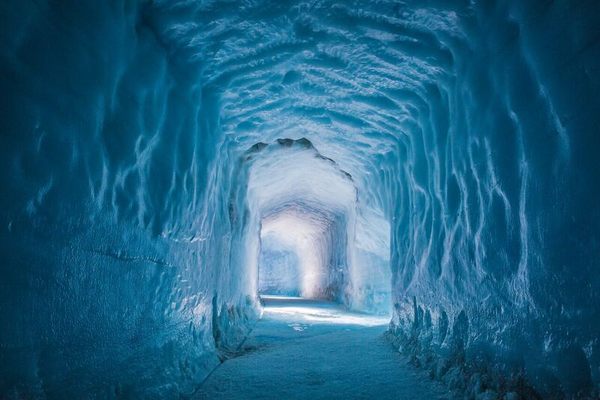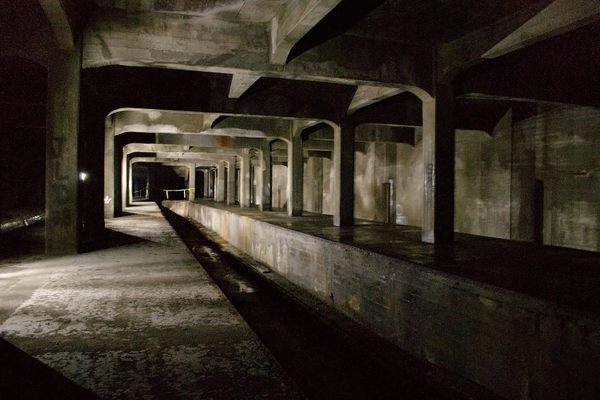What Is a Snow Tunnel?
Up in the Scottish Highlands, you can stand inside two seasons at once.

When Iain Cameron, a snow-obsessed Scot, picks his way across the Highlands in July or August, he’s often wearing shorts and a t-shirt. That’s all well and good when he’s tromping through emerald mosses, sprawling lichens, and stubby grasses. It starts to feel a little strange when he approaches patches of lingering snow, and stranger still when he strolls right into a snow tunnel and finds himself standing beneath scalloped ceilings about 10 degrees cooler than the surrounding landscape.
Compared to some of the world’s soaring mountain ranges, Cameron says, Scotland’s are “no more than bumps, really.” The highest peak, on Ben Nevis, tops out around 4,400 feet—just high enough for semi-perennial patches of snow to persist from one year to the next. When enough snow has collected during the winter—and especially if it gathers high on Ben Nevis or in the Cairngorms range, and near water—conditions can be ideal for this fleeting frozen topography.

“As spring gets warmer and the ground starts to thaw, the water will move, and a trickle will burrow a hole through the snow,” Cameron says. As the warm air blows through this channel, also called a randkluft, it bores a tunnel that sometimes grows wider and wider until it’s large enough to walk through. Depending on how deep the snow cover was, the tunnel might be 15-20 feet high and traversable for a couple hundred feet.

From a distance, these tessellated snow forts “are really innocent-looking,” Cameron says. A mile away, they might not invite a second glance. The geometric patterns, known as ablation hollows, don’t come into view until you’re up close.
Cameron knows to look carefully. He works at an engineering firm, but has been keeping tabs on the snow for decades. He became fascinated by lingering snow as a kid, when he could see a straggling patch on Ben Lomond from the window of his parents’ house. Each year, he watched to see when it melted, and jotted it down in his diary. When he earned his driver’s license, he drove up into the hills. Now, he writes an annual report about snow-patch survival for the Royal Meteorological Society. It’s “just one of those things that I found strangely appealing,” he says.

His years of studying snow patches have also made him wary of encouraging other people to step inside the tunnels. If they collapse, tons of snow could come tumbling down. If that does happen, Cameron says, “You’re not looking at a sore head—you’re looking at a squashed body.”
Last year was a poor one for snow tunnels, but Cameron is optimistic about this year’s outlook. It was a snowy winter across Scotland—and while the deluge was a headache for commuters and travelers whose trips were snarled, it’s tantalizing for the snow hunters who will hit the hills this summer, looking to savor the incongruity of straddling two seasons at once. “It’s quite odd,” Cameron says, “to be standing close to snow that might have fallen nine or 10 months ago and is still there.”













Follow us on Twitter to get the latest on the world's hidden wonders.
Like us on Facebook to get the latest on the world's hidden wonders.
Follow us on Twitter Like us on Facebook